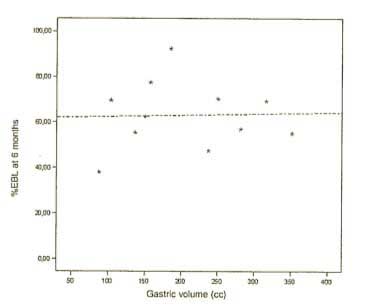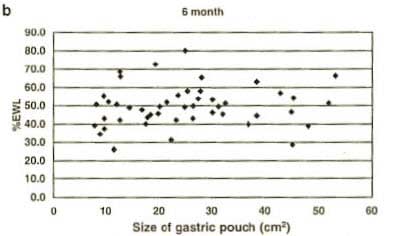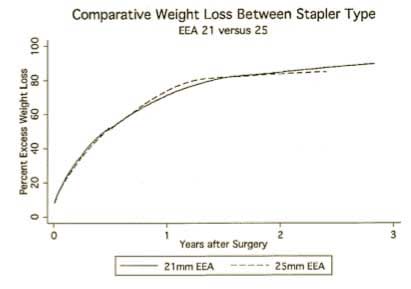Category: Duodenal Switch
“Common bile duct is dilated”
March 10, 2011 8:16 am
Duodenal Switch and Distal Gastric Bypass (ERNY)
December 04, 2009 7:24 pm
On 10/28/2009 I had a variation of the RNY gastric bypass (Distal Gastric Bypass) known as the Fobi pouch. I lost over 270 pounds, but I had debilitating complications of dumping syndrome, reactive hypoglycemia, acid reflux and vomiting.
My entire day was pretty much controlled by dumping syndrome. Due to the hypoglycemic episodes that resulted from dumping syndrome, I was constantly in a binge cycle, because I constantly needed to stabilize my blood sugar. I would eat breakfast and need to lay down. Once I started having hypoglycemia, I would get up and splurge on carbohydrates.
Note that my dumping syndrome was not caused by poor food choices. I only splurged off carbohydrates in a desperate attempt to quickly get my glucose levels up. This did work, but it lead me to dumping syndrome again. I then had another episode of hypoglycemia, which lead to more binging which resulted in more dumping, more binging and weight gain. Here is a diagram of the cycle I was constantly in:
Eat –> dump –>hypoglycemia –> binge –>redump –> more hypoglycemia –> binge –> dump
This was a constant cycle I was in, and as you can see here, my entire life became controlled by dumping syndrome, and it eventually caused me to become disabled. I am a full time student and was not able to go to school in this state. I would eat lunch and then go to class only to start dumping ten minutes into lecture, and I ended up dropping my classes for the semester.
I went to my bypass surgeon and told him of the problems I was having, and he told me that I was anorexic. I was also told that it was “…all in my head.”
After doing much research, I consulted with Dr. Keshishian. I handed him a list with the problems I was having and asked if revision to the duodenal switch would resolve these problems. Dr. Keshishian drew out a diagram of the anatomy of my surgery and showed me exactly why I was having these complications. I remember him saying, “There is a physiological explanation for why you are having these problems. It is not in your head. Yes, revision will resolve these complications.”
I had my revision on 4/11/2011, and all the complications I had with my bypass have been resolved, and I have had no complications with my duodenal switch. Now that my pylorus is working again, I can eat without becoming ill. I have now gone back to school, work, and have resumed back to a normal life.
YG
Obesityhelp.com revision Forum information
November 08, 2009 9:00 am
I am not sure what has happened over the past two weeks or so, but I have received a number of inquiries from patients who have had questions about the revision of RNY or Lap Band® for weight regain, inadequate weight loss, or other complications. I finally had to ask one of the patients where he got his information and heard about our practice. His source of information was the obesityhelp.com website.
I have spent some time looking over and responding to several postings on the forum sites. I have referred to a number of publications in some of my postings on obsityhelp.com.
Nishie et.al. (Obesity Surgery, 17, 2007 1183-1188) reported:
“Pouch size area, measured by routine UGI on the first postoperative day does not influence short term postoperative weight loss. “
Cottam et.al. (Obesity Surgery 2009, 19:13-17) concluded:
“The level of restriction or the presence of stenosis achieved by different stapler sizes does not have a significant role in weight loss.”
O’Connor et.al. (Surgery for Obesity and Related Dis. 4(2008) 399-403) summarizes:
“With construction of divided, vertical, lesser curvature based small-volume (less than or equal to 20 cm gastric pouches, the actual size of the gastric pouch did not correlate with the %EWL at 1 year laparoscopic GB.”
I am a firm believer that the best patient is the most knowledgeable patient. It is always safer to spend as much time as needed to ask questions and investigate all options. If I can provide any information, please contact us at contact@dssurgery.com
Does Size Matter
September 28, 2009 12:14 pm
The scientific basis for weight loss surgery, for the majority of the part relies on the premise that overeating and lack of exercise are the principal mechanisms contributing to the increase in the incidence of obesity over that last decade. Much has been said about our unhealthy life style that involves sedentary activity and immobility. Fast foods, high fat content meals, calorie dense food, are some of the examples of possible contributing factors to this health crisis.
The contrary position would be that there are other factors that contribute to obesity. These may include environmental factors, food preservatives, genetics, and exposures to toxins.
If one assumes that the over eating is the core problem, then you can also assume that the most successful operation will have the smallest stomach, since it will reduce the ability to over eat most drastically. This is where the scientific evidence does not support the theory and we all have to reassess the principal that the treatments are directed toward.
Recently there have been a number of studies that have been published in scientific journals that suggest size of the stomach or the pouch does not matter. So if obesity is the result of over eating then the operation that provides the smallest stomach must work the best. This argument should be true for the pouch size after gastric bypass, and the opening of the gastro-jejunostomy (connection between the stomach pouch and the small bowel connected to it after the gastric bypass, RNY operation). The same theory applies to the sleeve gastrectomy of the duodenal switch operation.
This argument that over eating and lack of exercise is the major contributing factor seems to be loosing ground.
The studies below are outline to demonstrate the disparity between the theory and the lack of scientific support for it.
1- Sanchez-Pernaute et.al. (Obesity Surgery, 17, 2007) reported that “After DS, gastric tube volume is not directly related to weight changes.” He proposed that there are other factors that may contribute to the weight loss than the size of the gastric tube.
This graph taken from the referenced study above shows that the size of the stomach sleeve does not correlate with the %EBWL in DS patients. The smaller stomach sleeve does not result in the more weight loss.
2- O’Connor et.al. (SOARD 4(2008)399-403) reported that “With construction of divided, vertical, lesser curve-based small-volume (=<20cm3) gastric pouches, the actual size of the gastric pouch did not correlate wit the %EBWL at 1 year after Laparoscopic, GB [gastric bypass]”.
3- Nishie et.al. (Obesity surgery, 17, 2007) concluded that “pouch size area, measured by routine UGI [upper GI series] on the first post operative day, does no influence short-term postoperative weight loss”.
This a sample of a number of graph that Nishie published in her study. The similar graphs were for 3, 12, and 24 months. They all had a flat line distributions. What they are showed was regardless of the time lapsed from surgery, the %EBWL was independent of the size of the pouch measured immediately post operatively.
4- Cottam et.al. (Obesity Surgery, 2009, 19:13-17) reported “The level of restriction or the presence of stenosis achieved by different circular stapler sizes does not have a significant role in weight loss”.
This study was focused on the size of the opening that is made between the stomach pouch and the small bowel in the gastric bypass (RNY) operation. The weight loss did not differ in the two groups of the patients. One group had a 21mm stapler and the other one 25mm stapler used. The weight loss, as measured by %EBWL was nearly identical in both cases.
In summary, the size does not seem to matter. The size of the stomach pouch, when it gets to a certain size in not important. The smaller stomach pouch or the narrower connection of the stomach and the small bowel will not make a patient loose more weight. Doesn’t this prove, to at least some degree, that there is much more to obesity than the simple notion of eating small portion and exercising?
Get informed
September 26, 2009 6:56 pm
Weight loss information
September 22, 2009 4:22 am
Melanoma to Duodenal Switch
April 25, 2005 7:47 pm
Duodenal Switch Patient Profile with Excellent OutcomeExclusive Member Content
April 01, 2004 7:16 pm



